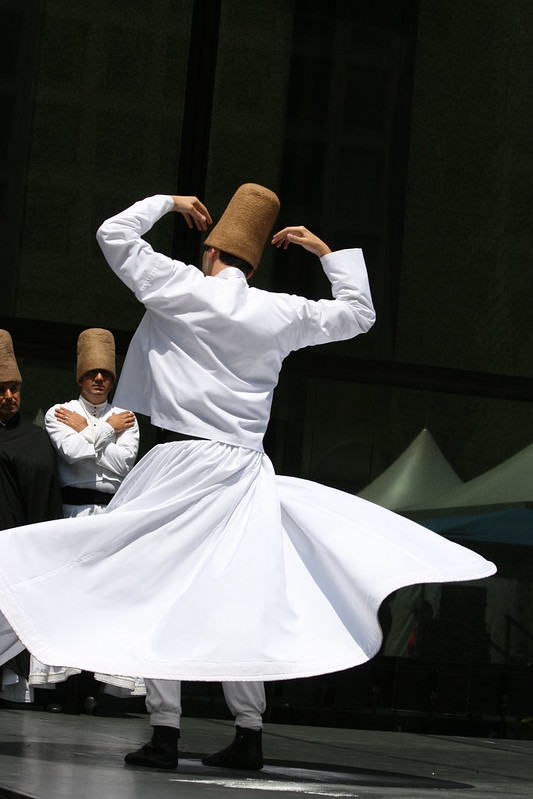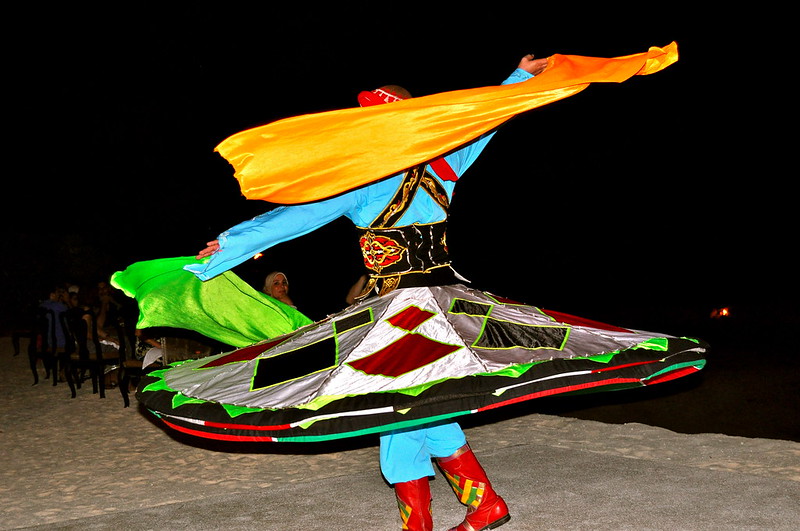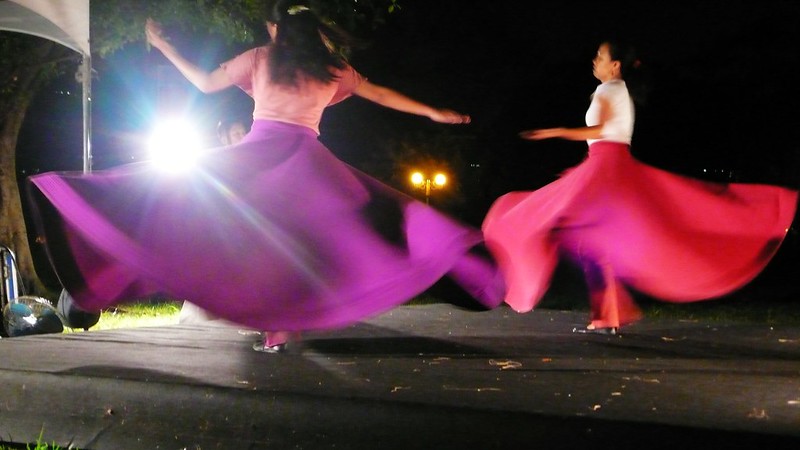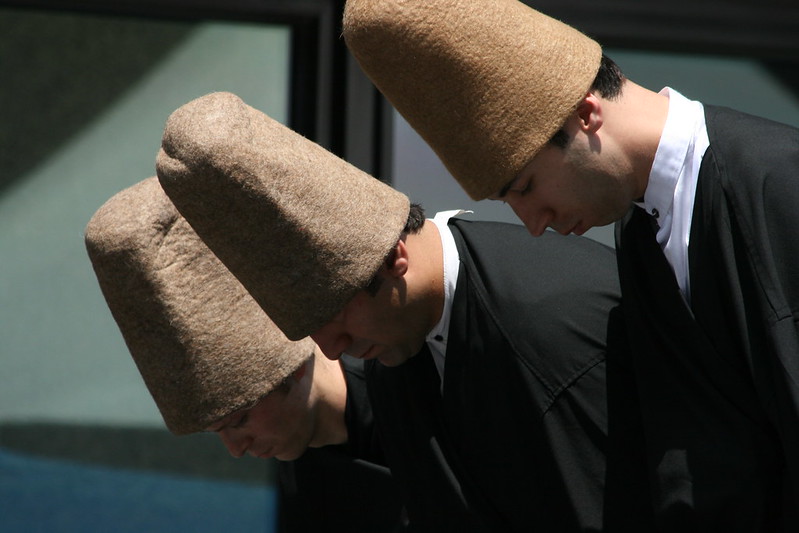Whirling Dervishes Festival
A Mesmerizing Dance of Divine Love
2026/12/06 - 2026/12/16
The central attraction of Mevlana Week, held every December in the ancient Turkish city of Konya, is a mystical whirling dance called Sema. Dervishes clad in long white skirts spin continuously for about an hour, accompanied by live traditional music. They extend their right hands upward to receive God's blessings and their left hands downward to distribute them to the earth. This ritual, based on the teachings of the 13th-century philosopher Rumi, is a form of prayer seeking unity with God through rotation. The venue, which can accommodate about 3,000 people, is filled with locals and tourists from around the world, creating a fantastical atmosphere. This ceremony, registered as a UNESCO Intangible Cultural Heritage in 2008, continues to captivate many people beyond religious and cultural differences.
Main Attractions
The Sema Ceremony
The heart of the festival is the Sema ceremony. Sema is a mystical whirling dance performed by the Mevlevi Order, a branch of Islamic mysticism (Sufism), based on the teachings of the 13th-century philosopher Rumi. This ceremony, which seeks unity with God through rotation, was registered as a UNESCO Intangible Cultural Heritage in 2008.
Sema is performed every night at the Mevlana Cultural Center, creating a fascinating spectacle. As the lights dim, the ethereal melody of the ney flute and the rhythmic beats of the kudum drum fill the space. The whirling dervishes (Semazen) appear on the circular stage, wearing long white robes symbolizing shrouds and tall hats (sikke) made of camel hair representing tombstones. They begin to rotate slowly, gradually increasing their speed, their skirts spreading out to form perfect circles. They continue to spin with their right hands raised to receive God's blessings and their left hands lowered to distribute them to the earth. This rotation, lasting about an hour, draws the audience into a hypnotic atmosphere, evoking deep emotions.
Rumi's Tomb
Pilgrimage to the tomb of Jalaluddin Muhammad Rumi, the 13th-century Sufi mystic and poet who founded the Mevlevi Order, is an essential part of the festival experience. The mausoleum, adorned with intricate calligraphy and surrounded by a serene rose garden, with its turquoise dome, attracts thousands of visitors daily. The air is thick with the scent of rose water and burning incense, while the soft murmur of prayers creates an atmosphere of profound reverence.
Traditional Cuisine
The festival is also a feast for the palate, offering a chance to savor Konya's distinctive cuisine. Local restaurants serve etli ekmek, a thin bread topped with minced meat, and fırın kebab, a slow-cooked lamb dish. The sweet aroma of şeker pare, a syrup-soaked pastry, wafts through the streets. Many visitors end their evenings sipping on frothy salep, a hot drink made from orchid tubers, sprinkled with cinnamon, its warmth a perfect complement to the cool December nights.
Cultural and Historical Background
The Whirling Dervishes Festival, also known as Şeb-i Arus (Night of Union), commemorates the death anniversary of Rumi on December 17, 1273. Rumi viewed death not as an end, but as a reunion with the divine, hence the celebratory nature of the festival. The Sema ceremony, which Rumi himself practiced, is a physical manifestation of spiritual ecstasy and symbolic representation of the human being's spiritual journey.
For the people of Konya and Sufi devotees worldwide, this festival is a profound spiritual event. It's a time for reflection, renewal, and connection with the divine. The festival also plays a crucial role in preserving and promoting Sufi culture and philosophy, attracting over 70,000 visitors annually. In 2008, UNESCO recognized the Mevlevi Sema ceremony as a Masterpiece of the Oral and Intangible Heritage of Humanity, underlining its cultural significance.
Participant's Voice
I came to Konya with a light heart, expecting to see an unusual dance. However, when I actually experienced the Sema ceremony, I was overwhelmed by its depth. When the ceremony began and the dancers in white robes started spinning, I was breathless at their beauty. After watching for a while, I had a strange sensation as if I was spinning with them. An elderly local man sitting next to me said, "They spin to forget themselves and become one with God," and when I heard those words, something clicked for me. Even after the ceremony, I couldn't get that scene and those words out of my head. While I may not be able to fully understand the teachings of Sufism, I was deeply impressed by the power of faith and left Konya feeling as if my heart had been cleansed.
Fun Facts
- The dervishes can spin up to 2,000 times in a single ceremony, yet rarely experience dizziness due to years of training.
- The distinctive tall hats worn by the dervishes, called sikke, are made from camel hair and symbolize the tombstone of the ego.
- During the whirling, dervishes keep one foot firmly on the ground while the other foot propels them around - symbolizing their connection to both the material and spiritual worlds.
- Rumi's tomb in Konya contains a piece of the Kaaba's cover and hair believed to be from the beard of Prophet Muhammad.
- The Mevlana Museum, which houses Rumi's tomb, is the second most visited museum in Turkey, attracting over 3.5 million visitors annually.
Festival Dates
The Whirling Dervishes Festival, or Şeb-i Arus, is typically held from December 7-17 each year, culminating on the anniversary of Rumi's death.
The event schedule is subject to change. Please check the official website for the most up-to-date information.
Media
Information
| Name | Whirling Dervishes Festival |
| Country | Turkey |
| Area | Konya, |
| Date | 2026/12/06 - 2026/12/16 |
| Link |
Upcoming Festivals
Whirling Dervishes Festival Turkey
A Mesmerizing Dance of Divine Love
2025/12/06Mevlana Celaleddin Rumi Commemoration Ceremony ( Şeb-i Arus ) Turkey
A Whirling Journey to Divine Love
2025/12/10Dia de la Virgen de Guadalupe Mexico
A Festival Weaving Faith, Fervor, and Mexican Identity
2025/12/11L'Escalade Switzerland
Geneva’s Grand Winter Festival of Courage, Chocolate, and Community
2025/12/12Umkhosi Wokweshwama South Africa
The Zulu First Fruits Festival—A Sacred Celebration of Land, Ancestors, and Renewal
2025/12/12Lucia Festival (St. Lucia's Day) Sweden
A Festival of Light Illuminating the Nordic Darkness
2025/12/15Las Posadas Mexico
The Luminous Quest for Sacred Shelter
2025/12/22Noche de Rabanos (Night of the Radishes) Mexico
A celebration blending art, farming heritage, and cultural traditions
2025/12/23Chant of the Sybil on Majorca Spain
A Medieval Prophecy Echoes Through Majorcan Christmas
2025/12/23‘Hatajo de Negritos’ and the ‘Hatajo de Pallitas’ Peru
A Christmas Festival of Rhythm, Faith, and Afro-Andean Heritage in Peru’s Ica Region



